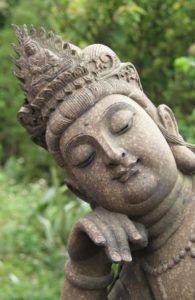In the vast realm of Buddhist philosophy and spirituality, the concepts of Arhat and Bodhisattva hold profound significance. These two terms, though often used interchangeably, represent distinct paths and ideals within Buddhism. In this comprehensive exploration, we delve into the intricacies of the Arhat and Bodhisattva, shedding light on their differences, roles, and contributions to the Buddhist tradition.
Arhat: The Enlightened One
The term “Arhat” finds its roots in ancient Sanskrit, where it signifies a person who has attained the highest level of spiritual enlightenment and liberation within the Buddhist context. The Arhat is often described as an individual who has achieved Nirvana, the ultimate state of liberation from the cycle of birth, death, and rebirth, known as Samsara.
- The Path of Arhatship: Arhats follow the path of individual liberation. They are dedicated to attaining personal enlightenment, often through rigorous meditation and self-discipline. Their goal is to break free from the cycle of suffering and attain Nirvana for themselves.
- Characteristics of an Arhat: Arhats are known for their deep wisdom, moral purity, and impeccable ethical conduct. They have conquered their desires, attachments, and ego, leading a life of renunciation.
- Role in Buddhism: Arhats are revered in Buddhist tradition for their spiritual achievements. They serve as inspirations to others on the path of enlightenment, showing that liberation from suffering is attainable through dedicated practice.
Bodhisattva: The Compassionate Being
Contrasting with the solitary journey of the Arhat, the term “Bodhisattva” embodies the spirit of compassion and altruism within Buddhism. A Bodhisattva is an individual who aspires to attain Buddhahood, not for personal liberation alone, but with the primary goal of helping all sentient beings achieve enlightenment.
- The Path of Bodhisattvahood: Bodhisattvas commit themselves to the welfare of others. Their path is characterized by boundless compassion, selflessness, and the vow to guide all beings towards awakening.
- Characteristics of a Bodhisattva: Bodhisattvas are known for their unwavering compassion, wisdom, and dedication to alleviating the suffering of others. They willingly postpone their own enlightenment to assist others in their spiritual journey.
- Role in Buddhism: Bodhisattvas play a pivotal role in Mahayana Buddhism, where they are venerated as beings of great compassion and wisdom. They serve as beacons of hope, embodying the ideal of selfless service and enlightenment for the benefit of all sentient beings.
Key Differences
Now, let’s elucidate the key distinctions between Arhats and Bodhisattvas:
- Motivation: Arhats seek personal liberation from suffering, while Bodhisattvas are motivated by the altruistic wish to alleviate the suffering of all beings.
- Path: Arhats follow the path of individual liberation, whereas Bodhisattvas commit to the path of universal liberation, helping others attain enlightenment.
- Compassion: Arhats possess compassion but primarily for themselves, whereas Bodhisattvas embrace boundless compassion for all sentient beings.
- Ultimate Goal: The Arhat’s ultimate goal is personal Nirvana, while the Bodhisattva aspires to attain Buddhahood and guide all beings to enlightenment.
In conclusion
The concepts of Arhat and Bodhisattva represent two distinct but complementary paths within Buddhism. While the Arhat pursues personal liberation and enlightenment, the Bodhisattva dedicates themselves to the well-being and enlightenment of all sentient beings. Both paths are noble and contribute significantly to the rich tapestry of Buddhist philosophy and practice.



